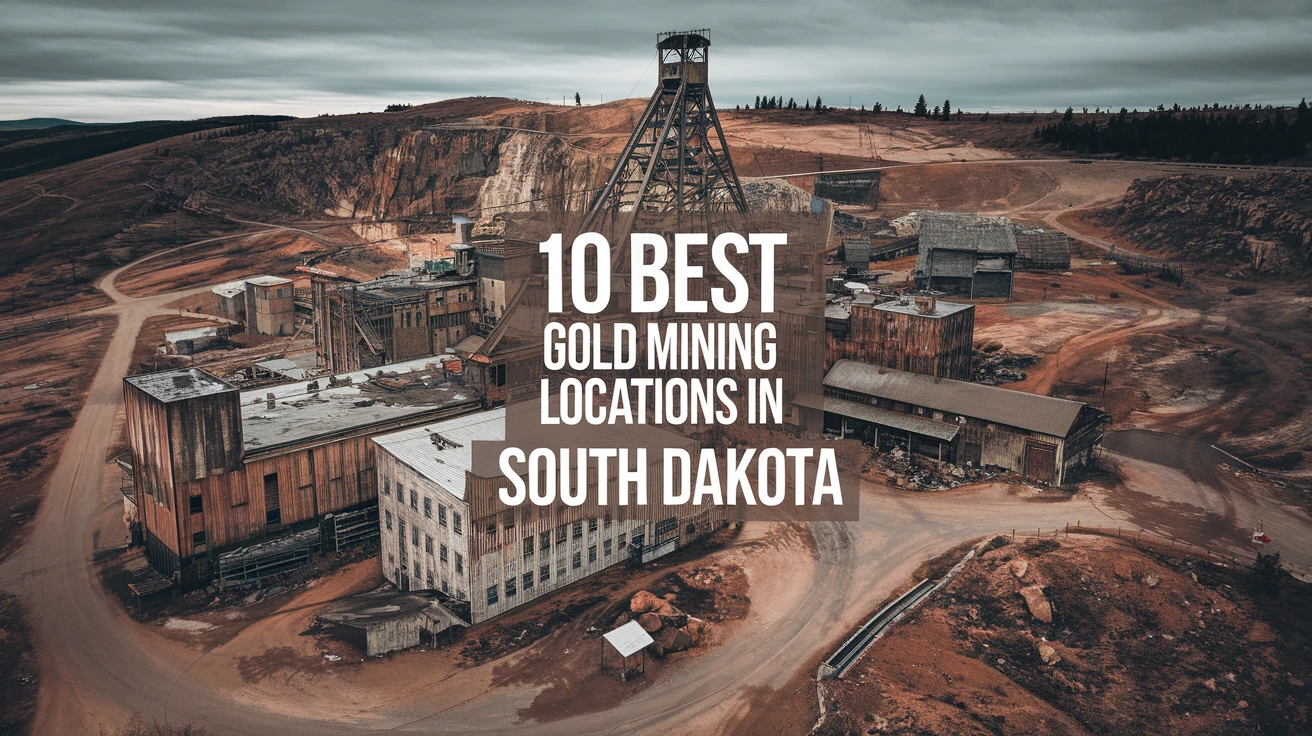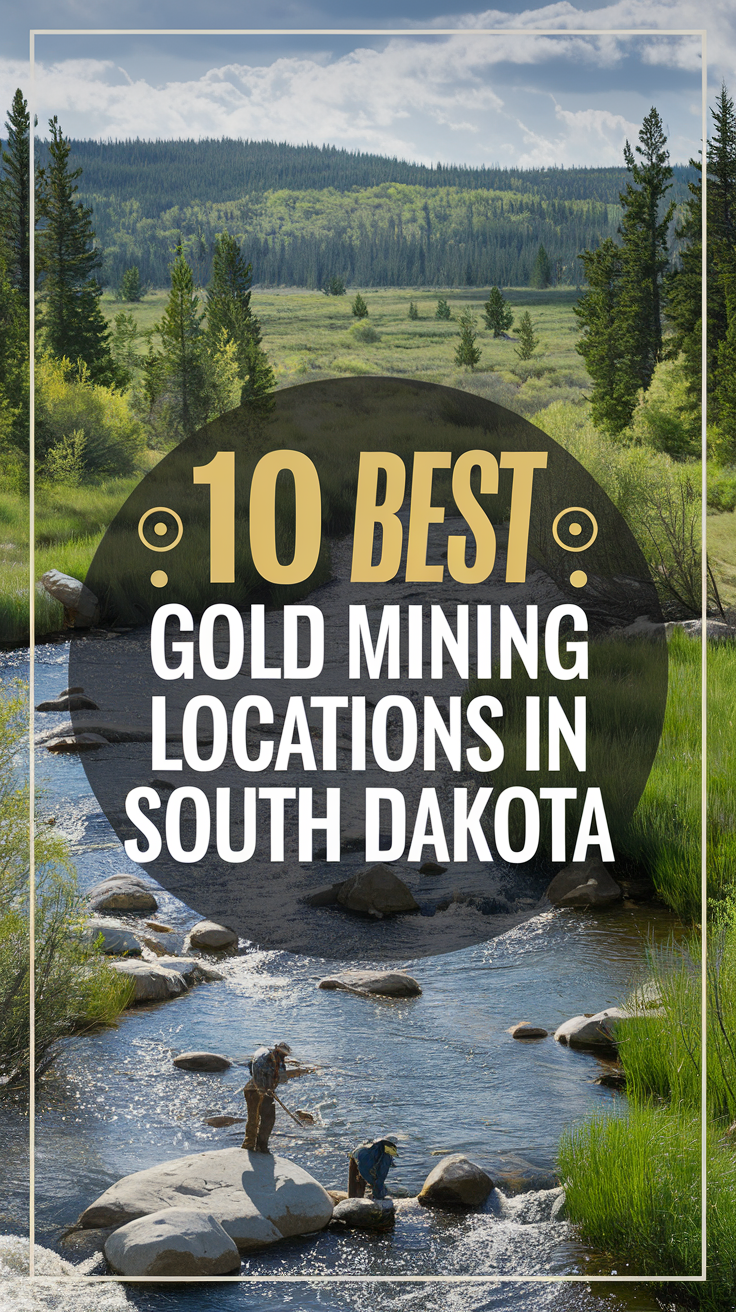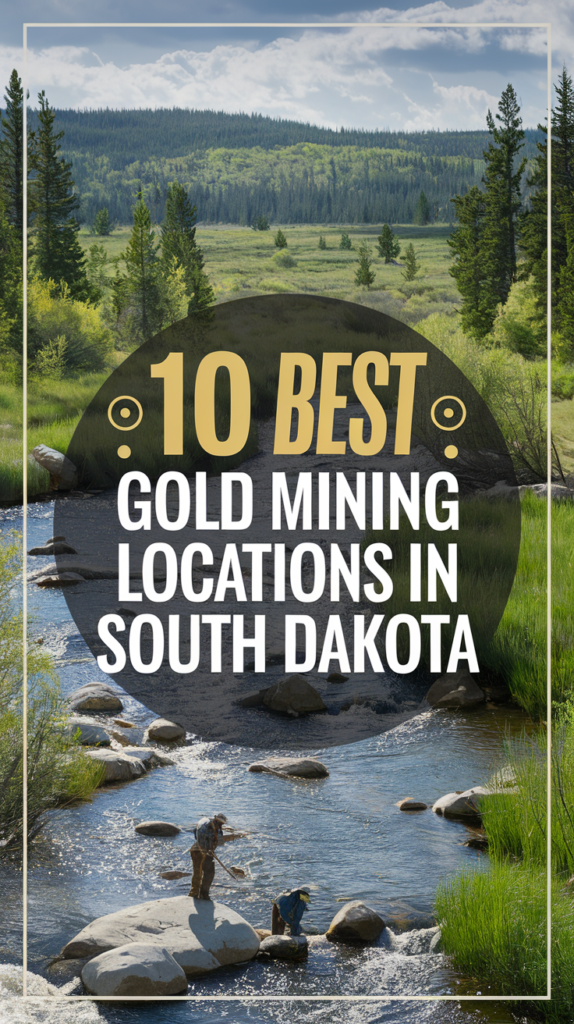
South Dakota’s rich mining heritage stretches back to the legendary Black Hills Gold Rush of 1874. These storied hills have yielded millions of ounces of gold, making South Dakota one of America’s most prolific gold-producing states. While the days of easy gold pickings may be behind us, numerous locations throughout the state still offer excellent opportunities for both amateur prospectors and serious miners. Whether you’re a weekend warrior with a gold pan or an experienced prospector with professional equipment, these ten locations represent the best spots to try your luck at striking it rich in South Dakota.
1. Homestake Mine – The Crown Jewel
The Homestake Mine stands as the most iconic gold mining location in South Dakota’s history. Though no longer operational for mining, this historic site in Lead, South Dakota, produced over 40 million ounces of gold during its 126-year run. Today, it serves as both a scientific facility and an educational destination.
Key Features:
– Historic mining exhibits
– Guided tours available
– Educational programs
– Underground research facility
Visitor Information:
| Operating Hours | Admission | Best Time to Visit |
|---|---|---|
| 9 AM – 5 PM (May-Sept) | $12 Adults, $8 Children | Summer months |
2. Deadwood Mining District
The Deadwood Mining District remains one of South Dakota’s most promising areas for recreational gold prospecting. This historic district, famous for its role in the Black Hills Gold Rush, continues to yield gold for determined prospectors.
Notable Areas:
– Deadwood Creek
– Hidden Gulch
– Spruce Gulch
– Gold Run Creek
| Equipment Allowed | Permit Required | Success Rate |
|---|---|---|
| Pans, Sluices, Metal Detectors | Yes – Local Mining Office | Moderate to High |
3. Lead Mining Area
The city of Lead offers numerous opportunities for gold prospecting, particularly in the surrounding creeks and gulches. The area’s rich mining history has left behind many promising locations for modern-day prospectors.
Best Prospecting Spots:
– Open Cut Area
– Gold Run Gulch
– Poorman Gulch
– West Lead Creek
Required Equipment:
- Gold pan and classifier
- Sluice box (where permitted)
- Rock hammer and pick
- Safety equipment
4. Black Hills National Forest Claims
The Black Hills National Forest contains numerous active mining claims and public prospecting areas. While some locations require permits or claim ownership, others are open to recreational prospecting.
Popular Forest Areas:
- Rapid Creek watershed
- Castle Creek area
- Spring Creek district
- Boulder Creek region
Seasonal Considerations:
| Season | Accessibility | Water Levels |
|---|---|---|
| Spring | Limited due to mud | High |
| Summer | Excellent | Moderate |
| Fall | Good | Low |
5. Battle Creek Gold District
Battle Creek has historically been one of South Dakota’s more productive gold-bearing streams. Modern prospectors continue to find both placer and lode gold in this area.
Prospecting Tips:
– Focus on areas below old mines
– Check creek bends and natural traps
– Look for black sand deposits
– Sample multiple locations
6. Annie Creek Gold Panning Area
Annie Creek offers excellent opportunities for recreational gold panning, particularly suitable for beginners. The creek’s accessibility and consistent gold presence make it a favorite among local prospectors.
Location Features:
– Easy access from main roads
– Shallow water depths
– Family-friendly areas
– Good camping nearby
7. Whitewood Creek
Whitewood Creek, flowing through the heart of the Black Hills, continues to produce gold for patient prospectors. The creek’s history of mining activity has left behind numerous areas worth exploring.
Best Prospecting Methods:
– Crevicing in bedrock
– Panning creek gravels
– Sluicing in permitted areas
– Metal detecting old tailings
8. Bear Butte Creek
Bear Butte Creek offers both historical significance and modern prospecting opportunities. The creek’s gradual grade and numerous access points make it ideal for both beginners and experienced prospectors.
Equipment Recommendations:
- Long-handled shovel
- Multiple classifiers
- Snuffer bottle
- Gold pan with riffles
9. Yellow Creek Mining District
The Yellow Creek Mining District represents one of South Dakota’s lesser-known but potentially rewarding areas. Its remote location often means less competition from other prospectors.
Access Information:
– 4-wheel drive recommended
– Limited cell service
– Camping permitted with proper permits
– Pack in/pack out required
10. Victoria Creek Gold Area
Victoria Creek rounds out our list with its combination of historical significance and modern prospecting potential. Though less frequented than some other locations, it continues to yield gold for knowledgeable prospectors.
Success Strategies:
– Research historical mining locations
– Focus on winter and spring prospecting
– Work systematically upstream
– Document productive areas
Conclusion
South Dakota’s gold mining locations offer something for everyone, from casual weekend prospectors to serious mining enthusiasts. While the days of major gold rushes may be past, these ten locations continue to yield gold for those willing to put in the time and effort. Remember to always check local regulations, obtain necessary permits, and respect both private property and environmental considerations. With proper preparation and persistence, you might just find yourself adding to South Dakota’s rich golden legacy.
Key Takeaways
- Always obtain necessary permits and permissions before prospecting
- The Black Hills region offers the highest concentration of gold-bearing areas
- Best prospecting seasons are late spring through early fall
- Proper equipment and safety measures are essential for success
- Research and documentation improve your chances of finding gold
Frequently Asked Questions
Do I need a permit to prospect for gold in South Dakota?
Yes, most locations require either a recreational prospecting permit or claim ownership. Contact the local BLM office or Forest Service for specific requirements.
What is the best time of year to prospect for gold in South Dakota?
Late spring through early fall offers the best conditions, with summer being ideal for water levels and weather conditions.
Can I keep the gold I find?
Yes, if you’re prospecting legally with proper permits, you can keep any gold you find. However, quantities may be limited for recreational prospecting.
What basic equipment do I need to start gold prospecting?
Basic equipment includes a gold pan, classifier, shovel, snuffer bottle, and proper safety gear. Additional equipment like sluice boxes may require special permits.
Are there any guided prospecting tours available?
Yes, several companies offer guided prospecting tours, particularly in the Deadwood and Lead areas. These can be excellent for beginners.
How much gold can I expect to find?
Amounts vary greatly, but recreational prospectors typically find small quantities measured in grains or grams rather than ounces.
Is it legal to use a metal detector for gold prospecting?
Yes, metal detecting is legal in many areas, but specific regulations may apply. Always check local rules and obtain necessary permits.
Are there any dangers I should be aware of while prospecting?
Common hazards include steep terrain, water dangers, wildlife, and old mine workings. Always practice safety first and never prospect alone.
Can I camp near prospecting sites?
Many areas allow camping, but regulations vary. Check with local authorities and obtain necessary permits for overnight stays.
What type of gold is commonly found in South Dakota?
Both placer gold in streams and lode gold in quartz veins can be found. Placer gold is more accessible for recreational prospectors.


